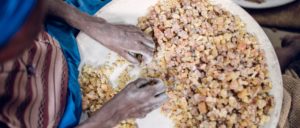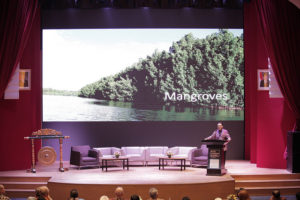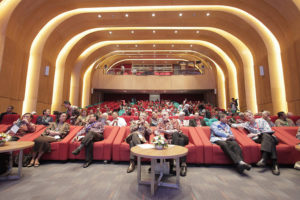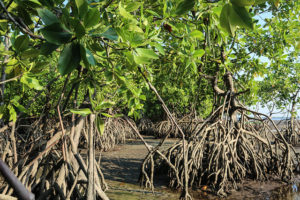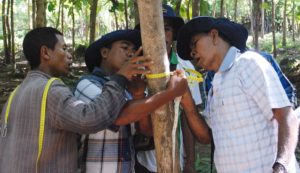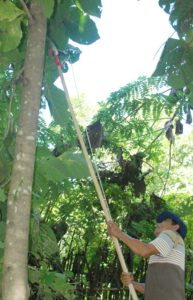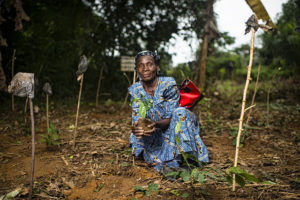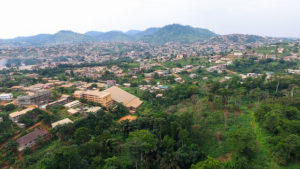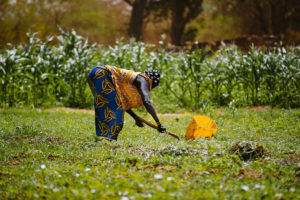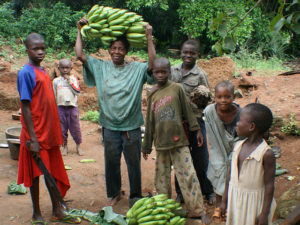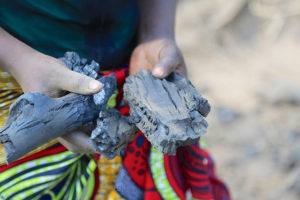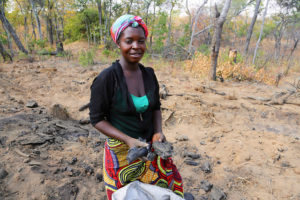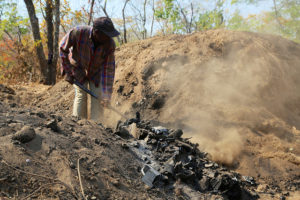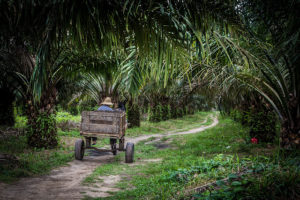
Millions of people around the world live in or near tropical forests and rely on them for their livelihoods. Thus conservation and reforestation work needs to take into account existing land uses and seek solutions that serve local communities as well as bigger-picture goals.
Conserving and restoring these forests could represent over a quarter of the near-term solution to addressing climate change.
An increasingly popular option for managing landscapes that takes social, economic, political and ecological considerations into account – which many researchers and policymakers are now turning their attention toward – is a jurisdictional approach (JA), in which a landscape is defined by policy-relevant boundaries, and a high level of governmental involvement is at the core.
According to the authors of a new study that assesses the effectiveness of JAs in a number of locations around the world, the approach “holds tremendous potential for advancing holistic, durable solutions to the intertwined issues of tropical deforestation, rural livelihoods and food security.” There are a number of jurisdictional “experiments” underway at present, so the authors hold that “the time is ripe” for a systematic assessment to begin drawing on early lessons from these experiments in locations across the tropics.
Read more: The State of Jurisdictional Sustainability: Synthesis for practitioners and policymakers
The fruit of a collaboration between the Earth Innovation Institute (EII), the Center for International Forestry Research (CIFOR) and the Governors’ Climate and Forests Task Force (GCF-TF), the report comes on the 10th anniversary of the GCF-TF – a historical moment for acknowledging the progress that subnational governments have made as climate action leaders – and is being launched at the GCF-TF Annual Meeting on September 10 and 11 in San Francisco. The meeting precedes the Global Climate Action Summit, which aims to push for deeper worldwide commitments and accelerated action toward realizing the goals of the Paris Agreement and preventing dangerous climate change.
The report is the first comprehensive assessment of jurisdictional sustainability, and draws from evidence in 39 states and provinces in 12 countries where commitments to low-emissions development are in place, says lead author Claudia Stickler, who is a scientist at EII. She says that the majority of the jurisdictions in the study have made at least one pledge or commitment to reduce deforestation, and more than half of those have at least one policy, program or other action in place to achieve that commitment.
Amy Duchelle, a scientist at CIFOR who co-authored the study, hopes that the information will be used widely by subnational governments and the range of actors supporting these efforts toward JA.
Read also: Deep down in supply chains, zero deforestation commitments look different to what appears on paper
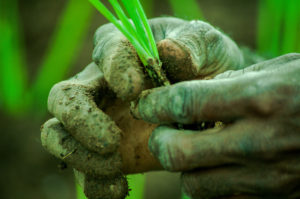
DECOUPLING GROWTH AND DEFORESTATION
The researchers evaluated the sites’ progress toward low-emission, sustainable development, taking into account their goals and commitments, monitoring and reporting systems and multi-stakeholder governance platforms, as well as innovative policies and initiatives that are key to jurisdictional sustainability. They also assessed deforestation and emission rates and trends in depth, and explored barriers to – and opportunities for – building sustainability.
On many levels, the results were heartening: the researchers found “considerable progress” in all of the jurisdictions they studied. Around half of the jurisdictions had reduced deforestation below their Forest Reference Emission Level (FREL) over the last five years. In Brazil, states using the approach made particularly impressive progress: they were shown to have reduced deforestation by around 44% relative to their FREL. The researchers also found that on average, GDP was increasing in the sites much faster than deforestation rates: in almost all the jurisdictions, they concluded that “economic growth (signaled by GDP) appears to be decoupled from deforestation.”
Already, there has been positive feedback. According to Rafael Robles de Benítez, Climate Change Director of Quintana Roo, Mexico (a co-hosting city of the GCF-TF Annual Meeting), “This report is really useful because jurisdictions can share fundamental information about their progress with each other and partners. It also helps with planning and identifying gaps that require attention and management.”
Read also: CIFOR now hosts comprehensive REDD+ tool ID-RECCO
REWARDS REQUIRED
To realize the full potential of JAs, the political leaders putting the processes into practice need more support, the co-authors conclude. “Even the front-runners among jurisdictions [in terms of achievements in sustainability] have not seen a whole lot of benefits for their efforts,” says Stickler. Almost USD 15 billion has been pledged in support for sub-national jurisdictions (directly or via national or regional programs or funds) to pursue REDD+ and low-emissions development since 2008. But the study found that “substantially less has actually disbursed to jurisdictions in that same time period,” she says.
According to co-author and EII Executive Director and scientist Daniel Nepstad, this means that, with a few notable exceptions, “the political leaders of tropical states and provinces who want to take this on – who are ready to put the policies and programs in place to slow deforestation and support forest communities across vast regions – are not getting the partnerships that they need to make it happen.”
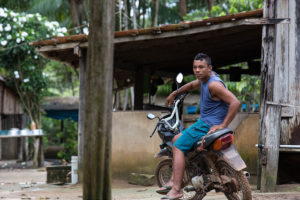
As such, Stickler advises that “jurisdictional governments and other actors need to continue receiving positive signals that their efforts are worthwhile and should be expanded.” They also need help accessing resources and building better processes and partnerships, she says, in order to move toward achieving their commitments to reduce deforestation and degradation, as well as to improve well-being for their citizens.
Without this kind of explicit support, these jurisdictional-level efforts risk fading into obscurity and failing to achieve the level of change required. At present, says Nepstad, “the fight against tropical deforestation is still a political ambition that is hard to get elected on if you want to be governor of a tropical forest state or province – and that is a problem.”
At the meeting, Mary Nichols, California Air Resources Board Chair, emphasized how the GCF-TF, which California helped create, has grown to include governments together holding a third of all tropical forests. She went on to highlight that “the GCF-TF has increased its inclusivity and its focus on real success stories involving science and traditional knowledge. To see the level of engagement and joint efforts by states and provinces with foundations, donor countries and, most importantly, indigenous communities, this gives me great hope for the future and our ability to really address the climate crisis.”
By Monica Evans, originally published at CIFOR’s Forests News.
For more information on this topic, please contact Amy Duchelle at a.duchelle@cgiar.org.
This research forms part of the CGIAR Research Program on Forests, Trees and Agroforestry, which is supported by CGIAR Fund Donors.
This research was supported by the International Climate Initiative (IKI) of the German Federal Ministry for the Environment, Nature Conservation, Building and Nuclear Safety (BMUB); and the Norwegian Agency for Development Cooperation (NORAD).












